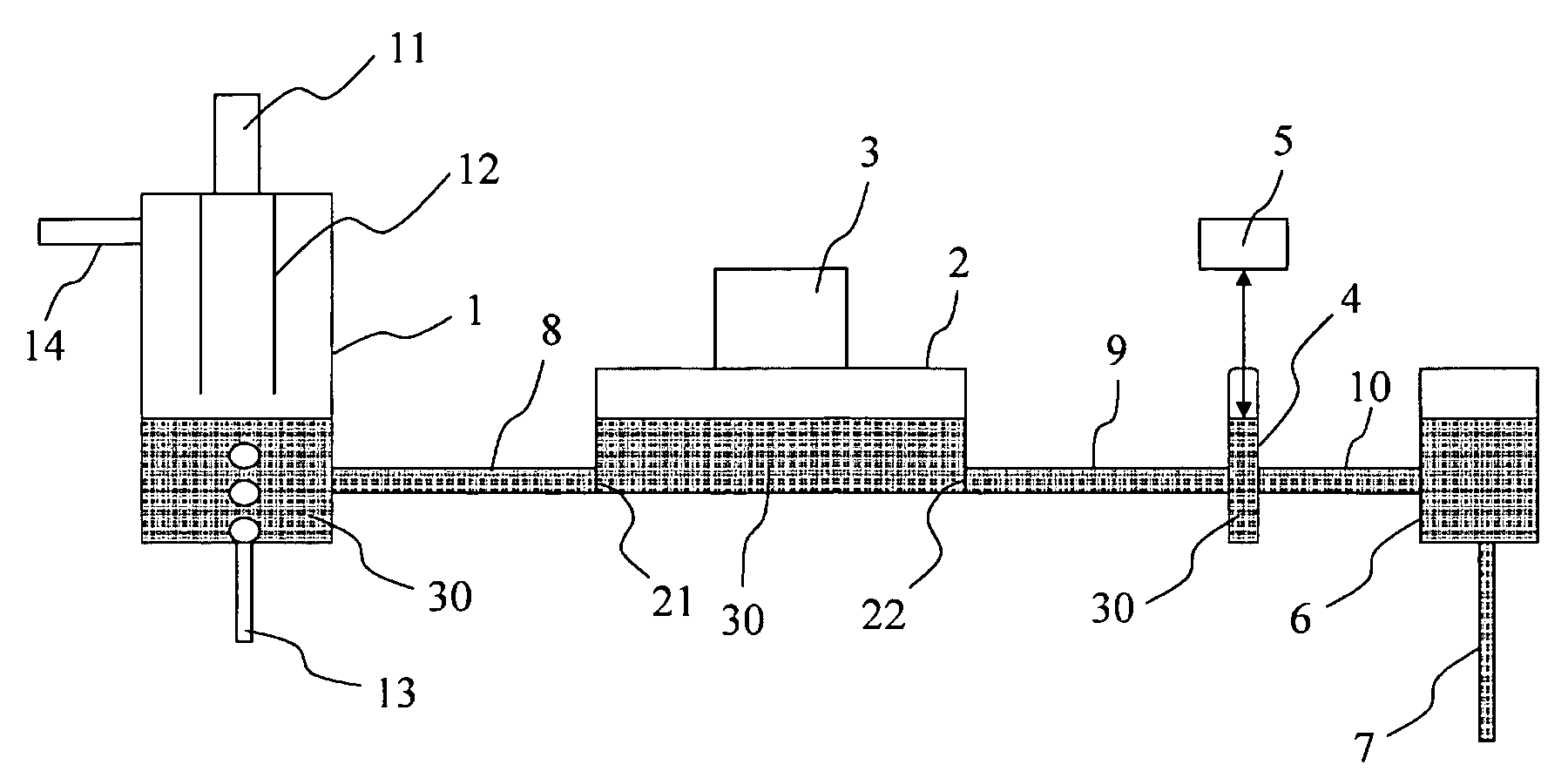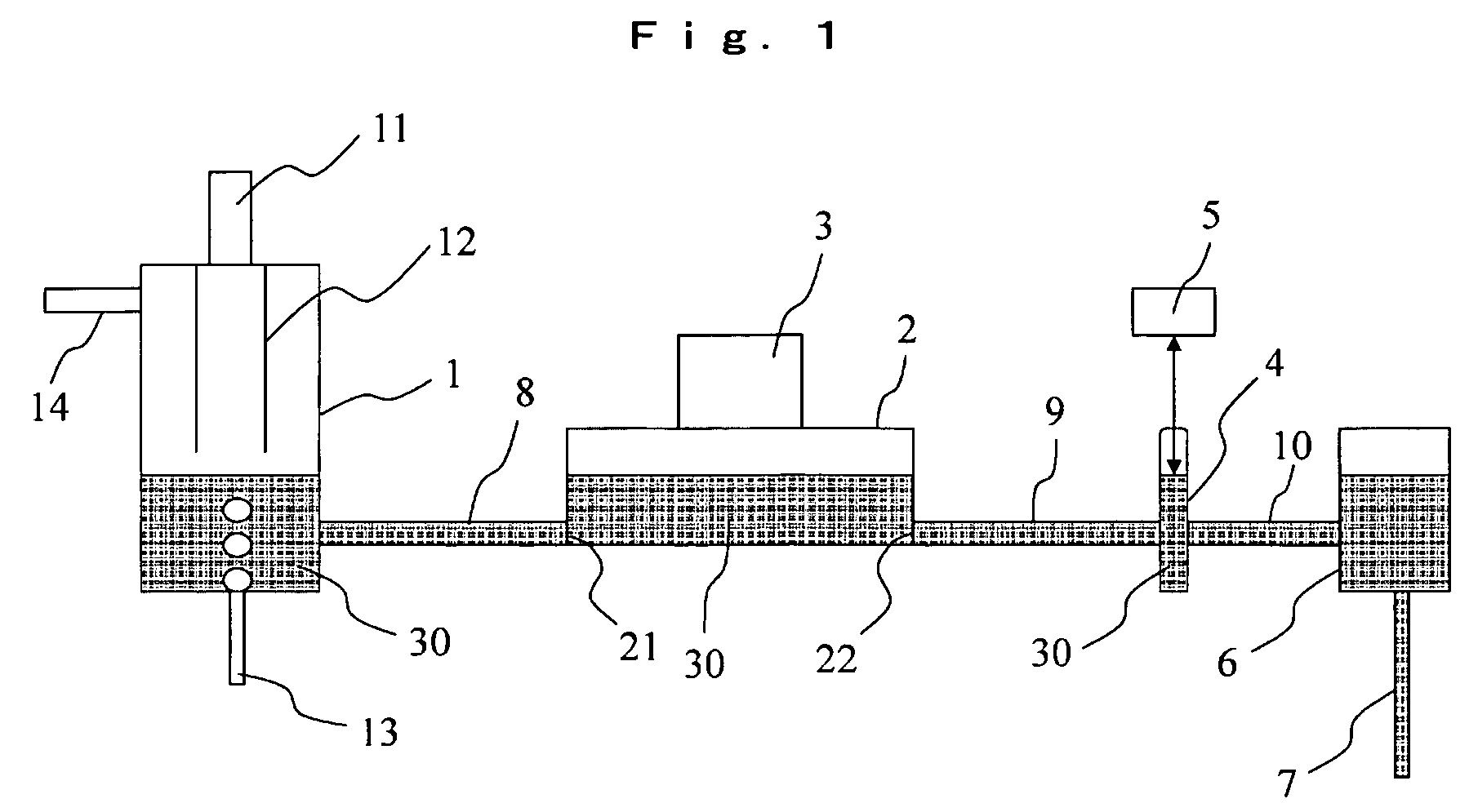Method of manufacturing glass melt and method of manufacturing molded glass material
a manufacturing method and glass melt technology, applied in the direction of manufacturing tools, machines/engines, instruments, etc., can solve the problems of fluorine-containing glasses by the above method
- Summary
- Abstract
- Description
- Claims
- Application Information
AI Technical Summary
Benefits of technology
Problems solved by technology
Method used
Image
Examples
embodiments
Embodiment 1
[0056]Embodiments will be described below with reference to the drawings.
[0057]FIG. 1 is a schematic view of a cross-section of a glass melting furnace employed in the present embodiment.
[0058]A glass raw material introduction opening 11 is provided in the upper portion of a melting vat 1 of platinum, through which a glass raw material obtained by blending multiple powdered compounds of various types is introduced to glass melt accumulating in the melting vat.
[0059]Fluorophosphate glass, a typical fluorine-containing glass, is an optical glass in which fluorine is used to raise the Abbé number (νd) and that exhibits a high degree of positive anomalous dispersivity. The raw materials are a fluorine compound MFx and a metaphosphate compound M′ (PO3)x′. Here, M and M′ each denote a metal element such as an alkali metal element or alkaline earth metal element, or one or multiple metal elements selected from among other metal elements. x and x′ denote the valence numbers of M...
embodiment 2
[0070]The molten fluorophosphate glass manufactured by the method of Embodiment 1 was made to flow out of a flow pipe at a constant flow rate into a casting mold and sheet glass comprised of the fluorophosphate glass was molded. The sheet glass was annealed and cut into prescribed shape to produce cut glass.
[0071]Next, the cut glass was reheated and press molded in a pressing mold to obtain a lens-shaped molded product. The molded product was ground and polished to manufacture lenses of low-dispersion optical glass. The lens obtained exhibited the desired optical characteristics.
embodiment 3
[0072]Molten copper-containing fluorophosphate glass manufactured by the method of Embodiment 1 was made to flow out of a flow pipe at a constant flow rate into a casting mold, and sheet glass comprised of fluorophosphate glass was molded. The sheet glass was annealed, sliced to prescribed thickness, and optically polished to manufacture the color-compensating filter of a solid-state image pickup element having a near infrared radiation-absorbing function. As a result, it was possible to obtain color-compensating filter glass for solid-state image pickup elements having an external transmittance of greater than or equal to 85 percent at a wavelength of 400 nm and an external transmittance of less than or equal to 22 percent at a wavelength of 1,200 nm as calculated based on conversion to a thickness of 0.45 mm. Due to high transmittance at a wavelength of 400 nm and low transmittance at a wavelength of 120 nm, a good color-compensation function was achieved.
[0073]When copper-contain...
PUM
| Property | Measurement | Unit |
|---|---|---|
| modulation frequency | aaaaa | aaaaa |
| modulation frequency | aaaaa | aaaaa |
| modulation frequency | aaaaa | aaaaa |
Abstract
Description
Claims
Application Information
 Login to View More
Login to View More - R&D
- Intellectual Property
- Life Sciences
- Materials
- Tech Scout
- Unparalleled Data Quality
- Higher Quality Content
- 60% Fewer Hallucinations
Browse by: Latest US Patents, China's latest patents, Technical Efficacy Thesaurus, Application Domain, Technology Topic, Popular Technical Reports.
© 2025 PatSnap. All rights reserved.Legal|Privacy policy|Modern Slavery Act Transparency Statement|Sitemap|About US| Contact US: help@patsnap.com


